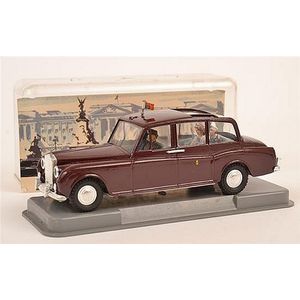Art Nouveau Silver Condiment Set with Spoons in Leather Case
You must be a subscriber, and be logged in to view price and dealer details.
Subscribe Now to view actual auction price for this item
When you subscribe, you have the option of setting the currency in which to display prices to $Au, $US, $NZ or Stg.
- Art Nouveau Period - The Art Nouveau period was a cultural movement that emerged in the late 19th century, and was characterized by its emphasis on natural forms, flowing lines, and a decorative, ornamental style. Art Nouveau was a reaction against the ornate and heavily stylized designs of the previous era, and sought to create a new, more organic aesthetic.
Art Nouveau was characterized by its use of sinuous, curving lines, as well as a focus on natural elements such as flowers, vines, and other organic shapes. Art Nouveau designers sought to create a total work of art, in which every element of a building or object was designed to be harmonious with the overall design.
Some of the most iconic examples of Art Nouveau design include the Paris Metro entrances designed by Hector Guimard, the works of the artist Alphonse Mucha, and the architecture of Victor Horta in Brussels.
The Art Nouveau period was at its peak between 1890 and 1910, but began to decline in popularity by the start of World War I. However, Art Nouveau remains an important influence on design and art to this day, and continues to be celebrated for its emphasis on natural forms and decorative style. - Finial - An architectural decoration, found on the upper parts of of an object. On furniture they are usually found on pediments, canopies and shelf supports. On smaller ceramic or silver items, such as spoons, they may decorate the top of the item itself, or the lid or cover where they provide a useful handle for removal.
Finials have a variety of shapes and forms. They may be urn-shaped, baluster shaped round or spiral, but usually taper into an upper point. Many real life shapes may also be used as finials, such as pineapples, berries, pinecones, buds, lotus and acorns. Sometimes animals such as a lion are depicted, or fish and dolphins.
This item has been included into following indexes:
Visually similar items

A rare Chinese 'Junyao' jar, Jin dynasty (1115-1234), with two loop handles, covered with a pale blue glaze with a thin purple splash, stopped just above the foot and running into the interior of the jar, 12.5 x 12.6 cm, similar jar please see Sotheby's Ol

Spot-On (UK) 260 Royal Rolls-Royce Phantom V, maroon body, flag to roof, grey interior with figures of HRH the Queen and Prince Philip to the rear with maroon 'Rug' on Their Laps, driver and Attendant to the front, turned aluminium hubs, in Rigid Perspex c

14ct white gold, amethyst and diamond pendant, weight: approx 7.8 grams, size 4 cm including bale

An Australian jewellery suite, comprising a locket of floral and foliate design, set with an old cut emerald, together with a pair of associated earrings of a similar design, all mounted in gold.
